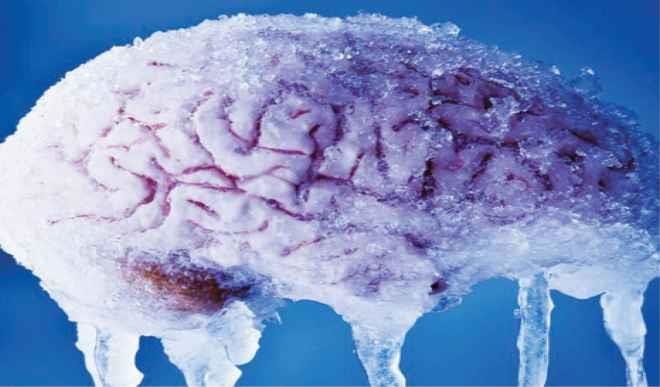
Your favourite ice cream sundae can be the perfect treat to end a hot day. Or maybe a cold smoothie with your favourite fruits and vegetables to start the day strong. No matter your choice of treat, these delicious cold foods — and especially beverages — can stop you in your tracks with a good ol’ case of sphenolopalatine ganglioneuralgia — or brain freeze.
What is a brain freeze?
We’ve all done it — despite our better judgement. The heat and mild dehydration can be overwhelming and cause us to guzzle down a particularly chilly treat that leaves us with a quick and intense headache. After many personal at-home experiments, it’s safe to say that we’ve learned the cause-and-effect portion of what causes a brain freeze. However, it’s deeper than just the cold temperatures ‘freezing’ your brain.
“A brain freeze is what happens when cold food touches a bundle of nerves in the back of the palate,” said Stephanie Vertrees, MD, headache specialist, neurologist and clinical assistant professor at the Texas A&M College of Medicine. “The sphenopalatine ganglion (SPG) is a group of nerves that are sensitive to cold food, and when they’re stimulated, they relay information that stimulates a part of the brain to have a headache.”
The SPG and headaches
The SPG is a very important bundle of nerves, and although it’s the source of brain freeze, this group of nerves is also the cause of other types of headaches.
“This is the same ganglion that is responsible for migraine headaches and cluster headaches,” Vertrees said. “There has been a lot of research done on this bundle of nerves, but mostly for trying to prevent these more serious and longer-lasting headaches. We now have two different kinds of devices for the SPG. One device blocks the nerve with a numbing agent, and the other that stimulates it electronically with the goal of eliminating or preventing migraine or cluster headaches from occurring.
Obviously, that approach is a bit extreme for treating a brain freeze, but these links between the different types of headaches can help people who suffer from migraines. “Many people will try to give themselves a brain freeze to try to break a migraine headache,” Vertrees said. “It may not work for everyone or work every time, but giving yourself a brain freeze can possibly alleviate a migraine.”
Avoiding and treating a brain freeze
There are several (obvious) ways to avoid a brain freeze, but fewer ways to treat one. “To avoid brain freeze, eat the cold food much more slowly so that your mouth can warm up the food — don’t inhale it,” Vertrees said. “Keep it in the front of your mouth: the further-back stimulation is what triggers the brain freeze.”
However, if you find yourself a victim to an ice cream headache, there’s a trick you can do to try and warm your way out of one. If you begin feeling a brain freeze coming on, press your tongue to the roof of your mouth. The heat from your tongue will warm up the sinuses behind your nose and then warm the ganglion that caused the brain freeze.
“Brain freezes are not dangerous and very self-limiting,” Vertrees said. “It’s about slowing down and being patient and aware of the likelihood of getting a brain freeze if you eat or drink too fast.”
Source: https://www.sciencedaily.com

 Join Daily Trust WhatsApp Community For Quick Access To News and Happenings Around You.
Join Daily Trust WhatsApp Community For Quick Access To News and Happenings Around You.


